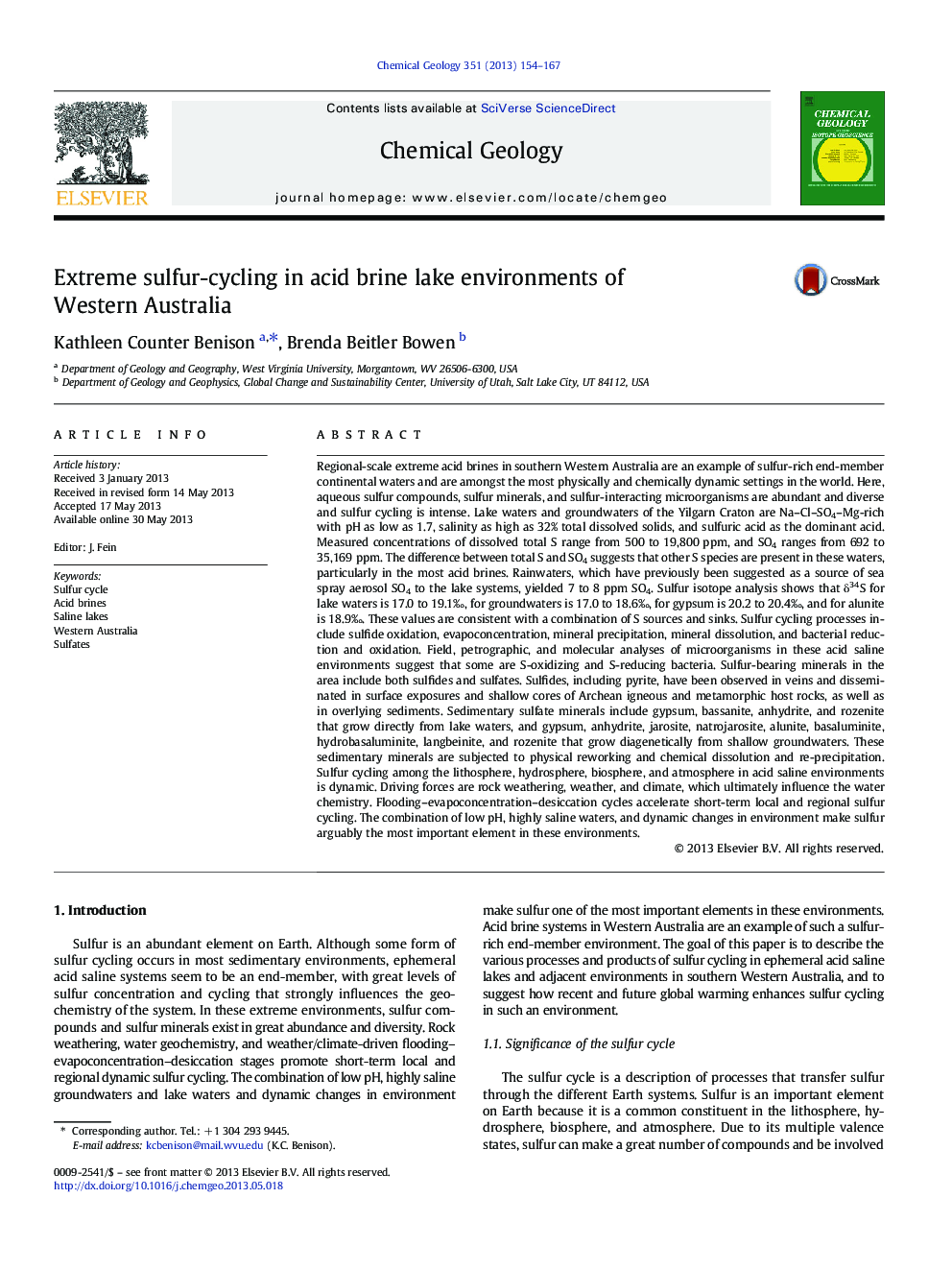| Article ID | Journal | Published Year | Pages | File Type |
|---|---|---|---|---|
| 6436910 | Chemical Geology | 2013 | 14 Pages |
â¢Regional-scale acid brines in Western Australia are a sulfur-rich brine end member.â¢Sulfur compounds, minerals, and microorganisms are abundant and diverse.â¢Sulfur is arguably the most important element in acid brine environments.
Regional-scale extreme acid brines in southern Western Australia are an example of sulfur-rich end-member continental waters and are amongst the most physically and chemically dynamic settings in the world. Here, aqueous sulfur compounds, sulfur minerals, and sulfur-interacting microorganisms are abundant and diverse and sulfur cycling is intense. Lake waters and groundwaters of the Yilgarn Craton are Na-Cl-SO4-Mg-rich with pH as low as 1.7, salinity as high as 32% total dissolved solids, and sulfuric acid as the dominant acid. Measured concentrations of dissolved total S range from 500 to 19,800 ppm, and SO4 ranges from 692 to 35,169 ppm. The difference between total S and SO4 suggests that other S species are present in these waters, particularly in the most acid brines. Rainwaters, which have previously been suggested as a source of sea spray aerosol SO4 to the lake systems, yielded 7 to 8 ppm SO4. Sulfur isotope analysis shows that δ34S for lake waters is 17.0 to 19.1â°, for groundwaters is 17.0 to 18.6â°, for gypsum is 20.2 to 20.4â°, and for alunite is 18.9â°. These values are consistent with a combination of S sources and sinks. Sulfur cycling processes include sulfide oxidation, evapoconcentration, mineral precipitation, mineral dissolution, and bacterial reduction and oxidation. Field, petrographic, and molecular analyses of microorganisms in these acid saline environments suggest that some are S-oxidizing and S-reducing bacteria. Sulfur-bearing minerals in the area include both sulfides and sulfates. Sulfides, including pyrite, have been observed in veins and disseminated in surface exposures and shallow cores of Archean igneous and metamorphic host rocks, as well as in overlying sediments. Sedimentary sulfate minerals include gypsum, bassanite, anhydrite, and rozenite that grow directly from lake waters, and gypsum, anhydrite, jarosite, natrojarosite, alunite, basaluminite, hydrobasaluminite, langbeinite, and rozenite that grow diagenetically from shallow groundwaters. These sedimentary minerals are subjected to physical reworking and chemical dissolution and re-precipitation. Sulfur cycling among the lithosphere, hydrosphere, biosphere, and atmosphere in acid saline environments is dynamic. Driving forces are rock weathering, weather, and climate, which ultimately influence the water chemistry. Flooding-evapoconcentration-desiccation cycles accelerate short-term local and regional sulfur cycling. The combination of low pH, highly saline waters, and dynamic changes in environment make sulfur arguably the most important element in these environments.
